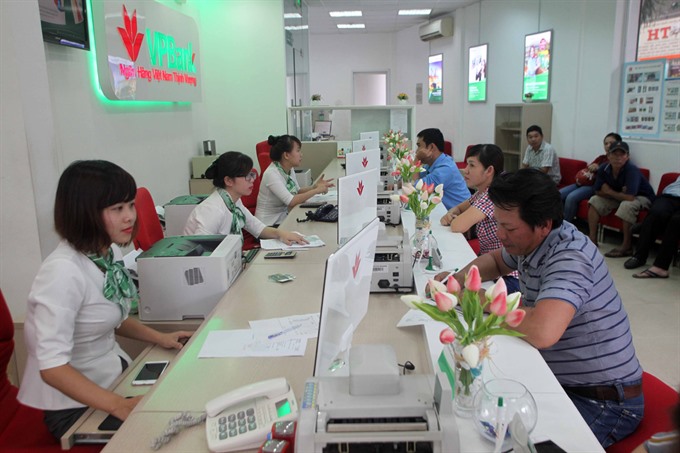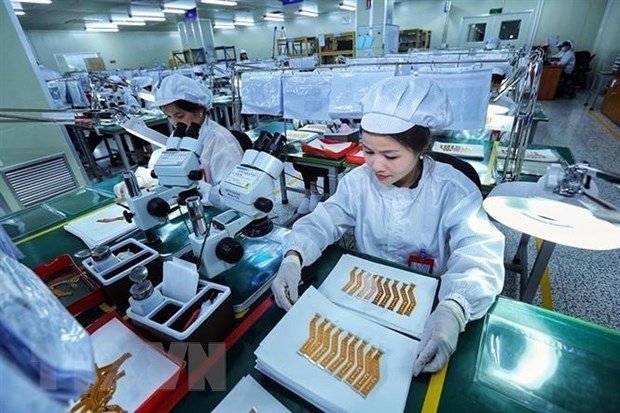 Economy
Economy

The country’s inflation this year is forecast at 2.6 per cent if there is no surge in the world’s goods prices and no adjustment of the public services, said the National Financial Supervisory Commission (NFSC).
 |
| A VPBank branch in Khánh Hòa Province. Interest rates for all terms in the interbank market have gradually decreased to 4-4.2 per cent as of May 22, down 0.8-1 percentage point compared to the levels at the end of April. — VNA/VNS Photo Trần Việt |
HÀ NỘI — The country’s inflation this year is forecast to reach 2.6 per cent barring fluctuations of prices on world markets and adjustment in the cost of public services, the National Financial Supervisory Commission (NFSC) reported on Monday.
In the first five months of the year, the average inflation rate was at 4.47 per cent. But the commission forecast that inflation would drop toward the end of the year due to stability of food and restaurant prices.
However, in its economic report for May and the first five months of 2017, the NFSC estimated that if the exchange rate of Việt Nam đồng against the US dollar rises 1 per cent, inflation will increase 0.17 per cent, while noting that the VNĐ/USD rate in commercial banks and the free market has shown a downward trend since early this year.
In the remaining months of 2017, the exchange rate will be affected by high foreign currency demand due to a rising trade deficit, the report said, forecasting that the country may see its trade balance change from a surplus in 2016 to a deficit of about 3.5 per cent of total exports.
The US Federal Reserve (Fed) raising of short-term interest with small adjustments has yet to cause pressure on the exchange rate, the report noted.
In the long-term, the commission said, the Việt Nam đồng will be under pressure from the Fed’s roadmap of raising interest rates, along with unpredictable changes in the prices of Chinese renminbi and Japanese yen. The prospect of stable interest rates in 2017 is being supported by macro factors and policies, such as reduced pressure on exchange rates and drastic measures in tackling bad debt, NFSC said.
The report also made clear that measures to settle bad debt help reduce interest rates. On May 16, the Government issued Decree 61/2017/NĐ-CP on the verification of bad debts’ initial price, and the formation of a council for bad debt auction.
At the same time, a draft law on support for credit institution restructuring and bad debt settlement is being finalised, and a decree on settlement of credit institutions’ bad debt may be approved as soon as June 20.
Interest rates for all terms in the interbank market have gradually decreased to 4-4.2 per cent as of May 22, down 0.8-1 percentage point compared to the levels at the end of April. Last week, deputy Governor of the State Bank (SBV) of Việt Nam, Nguyễn Thị Hồng, said the bank has focused on policies to curb inflation under the 4 per cent target set by the Government.
Figures from the General Statistics Office show a 0.53 per cent drop in the consumer price index (CPI) in May from the previous month, mostly due to a sharp fall in food prices. This month’s CPI rose 3.19 per cent from the same period in 2016.
Hồng said the central bank’s management of interest and exchange rates has kept the foreign currency market stable. By the end of last month, the central rate rose 1 per cent from the same period last year.
NFSC’s calculations show that the country’s ratio of credit-to-GDP has continuously increased since the last quarter of 2015 to reach 11 per cent in the first quarter of this year. This has been the second highest level in the 2009-17 period, following the ratio of 13 per cent in the first quarter of 2011.
The country’s credit growth in May saw positive signs. By the end of last month, credit rose 5.7 per cent compared to the same period last year. — VNS









